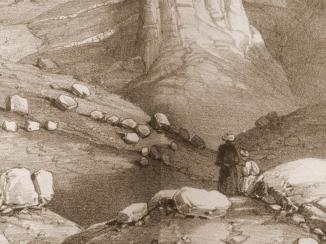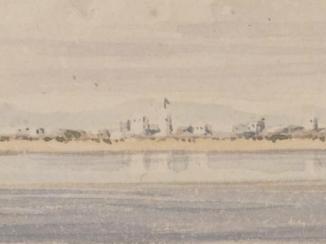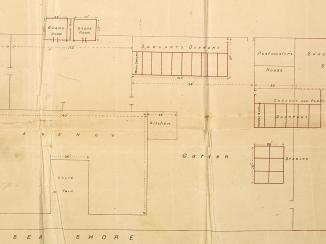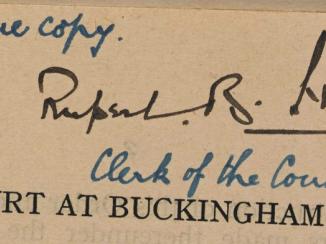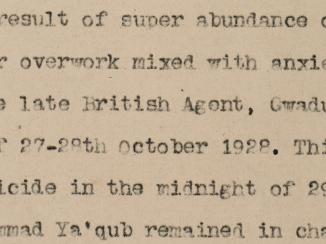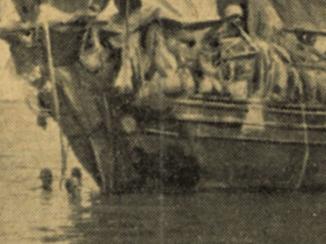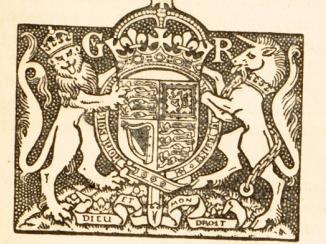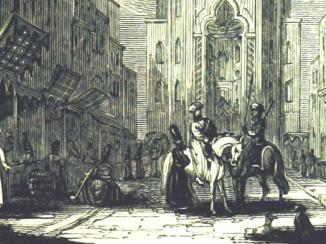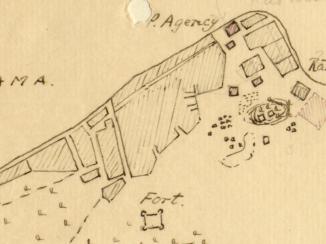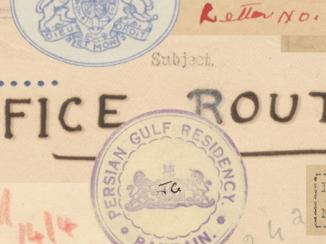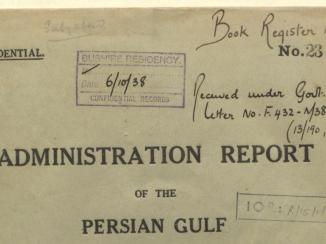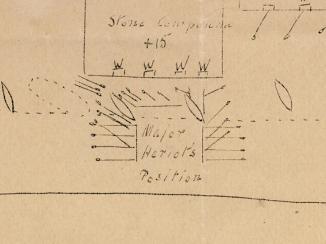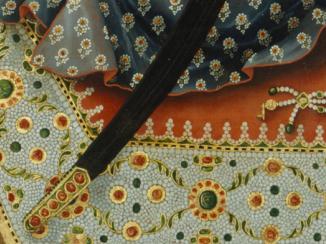Overview
The career of John Bax
John Bax (1793-1863) was a career civil servant with the Government of the Bombay Presidency The name given to each of the three divisions of the territory of the East India Company, and later the British Raj, on the Indian subcontinent. , one of the three administrative subdivisions of British India. He served between 1812 and 1840, acting as Secretary to a number of Bombay Government departments, and was Resident at Indore from 1835.
The journals
Bax made a number of journeys, many overland from England to India and back, in the course of his service with the Government of Bombay From c. 1668-1858, the East India Company’s administration in the city of Bombay [Mumbai] and western India. From 1858-1947, a subdivision of the British Raj. It was responsible for British relations with the Gulf and Red Sea regions. . He also made several tours of Britain and the continent of Europe. These journeys are all recorded in meticulous detail in his journals.
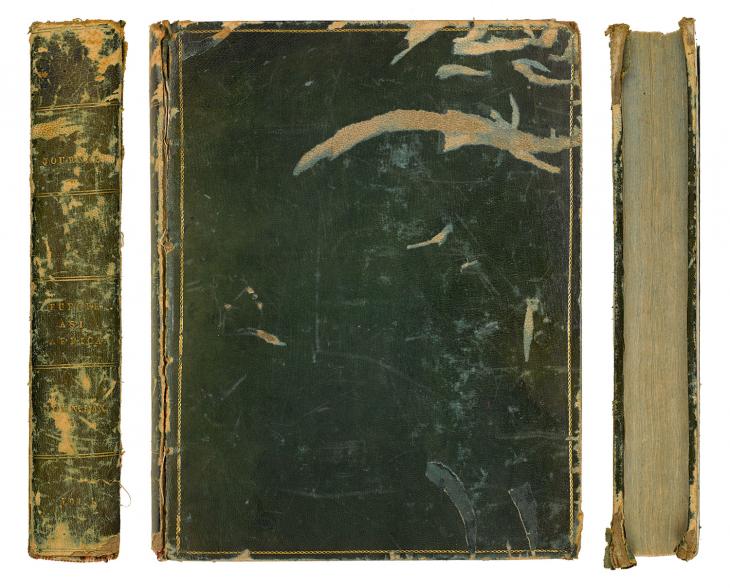
Bax’s journeys
The journals consist of two volumes, bound in emerald green morocco leather (now very worn), with gilt fillet borders. The pages of both volumes are in excellent condition, and the handwriting is generally clear. Volume I contains accounts of eight journeys, starting with Bax's voyage from England to Bombay in 1812, and continues with accounts of travels in India and the Gulf in 1815-22, as well as journeys from India to England and back again between 1822 and 1825.
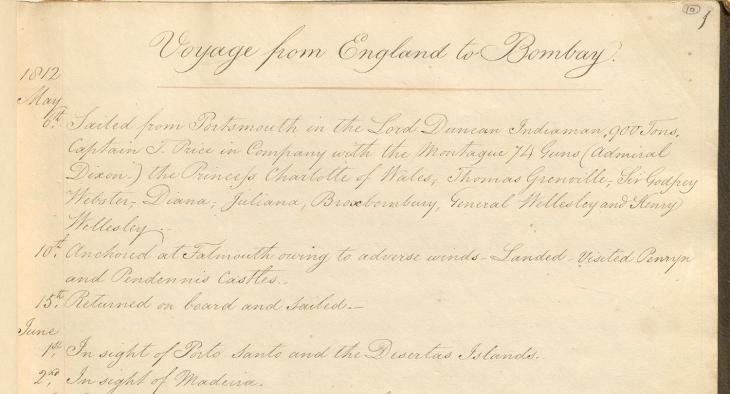
Volume II describes journeys in various parts of India in 1826-40, a voyage and journey from India to England in 1840, and journeys and tours in England, Wales, Scotland, Ireland, and continental Europe in 1841-59.
The detailed narrative of Bax’s journals includes regular entries recording positions of longitude and latitude, thermometer readings and climatic information, and tables of distances.
The Ra's al-Khaymah expedition of 1819
In 1819, Bax served as an observer to an expedition under the command of Major-General Sir William Grant Keir against the Qawasim One of the ruling families of the United Arab Emirates; also used to refer to a confederation of seafaring Arabs led by the Qāsimī tribe from Ras al Khaima. at Ra's al-Khaymah. The British viewed the activities of the Qawasim One of the ruling families of the United Arab Emirates; also used to refer to a confederation of seafaring Arabs led by the Qāsimī tribe from Ras al Khaima. along the coast of the Gulf as piracy, and a previous military expedition in 1809 had resulted in the capture of the port. However, a resumption of Qawasim One of the ruling families of the United Arab Emirates; also used to refer to a confederation of seafaring Arabs led by the Qāsimī tribe from Ras al Khaima. activity now made the Government of Bombay From c. 1668-1858, the East India Company’s administration in the city of Bombay [Mumbai] and western India. From 1858-1947, a subdivision of the British Raj. It was responsible for British relations with the Gulf and Red Sea regions. determined to root out the problem once and for all.
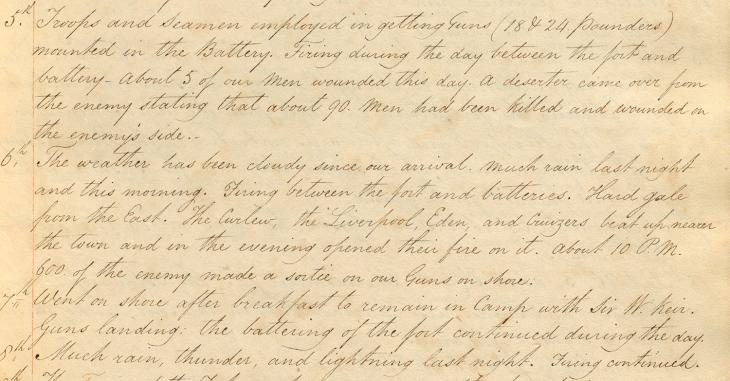
Bax describes the landing of Keir's force, and the preliminary exchanges of fire between the two sides, in which Major Molesworth of the 47th Regiment was killed. British troops and seamen then deployed guns on shore, and began a bombardment of the ‘fort’. A deserter reported to the British that about ninety men had been killed or wounded on the enemy side, and late one evening there was a sortie by about six hundred men against the British guns. The British then stepped up their barrage using naval vessels. Bax’s entry for 8 December reads: ‘Much rain, thunder, and lightning last night. Firing continued.’ By the sixth day of the operation, Bax reported that the towers of the fort were ‘much damaged and the breach practicable’. British troops then entered the fort and town ‘and found the whole deserted during the night and preceding day or two; the enemy fled into the neighbouring date groves across the creek in the rear of the fort’ (folios 18-19).
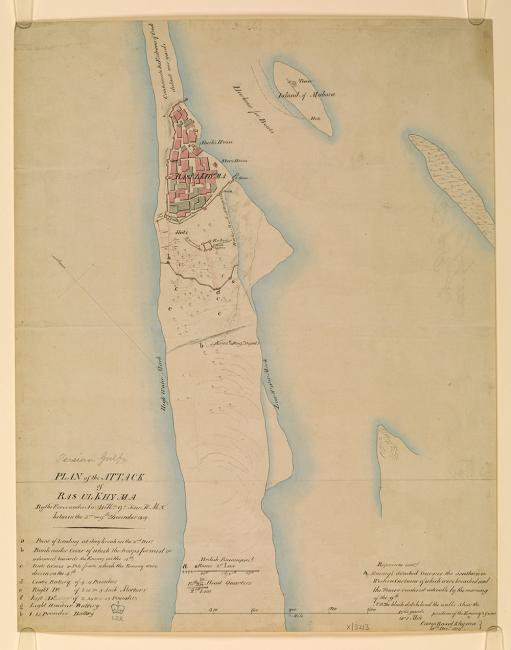
Further entries
From Ra's al-Khaymah, Bax sailed to Bushire, and from there travelled into the interior of Persia, passing through Shiraz. Here he found that the action at Ra's al-Khaymah had been highly exaggerated: ‘It is said that the English brought 40,000 men, that they killed 20,000 of the Enemy at Rusool Khima, and intend to invade Persia’ (folio 23v).
In 1825 he passed through the Gulf again, where he thought that ‘Bassadore [Bāsaʻīdū], Bahrein [Bahrain], or Karrik [Jazīreh-ye Khārk] would probably be the best stations for a British Residency An office of the East India Company and, later, of the British Raj, established in the provinces and regions considered part of, or under the influence of, British India. in the Gulf of Persia’ (folio 271). On 1 October of that year, he noted that at Ormus [the island of Hormuz], slabs of clear rock salt were abundant, and that ‘copper and iron ore are to be found in many islands in the Gulf, and fine black sparkling sand’. On 10 October, he noted that a comet had been visible in the Gulf each night since 18 September.
Bax’s later life
Following his return to England from India in 1840, Bax lived in Hertfordshire with his wife, Jane Ironside-Bax, and their seven children, and was appointed as a Justice of the Peace. Bax died (appropriately for a traveller) at Wiesbaden in Germany in 1863.


